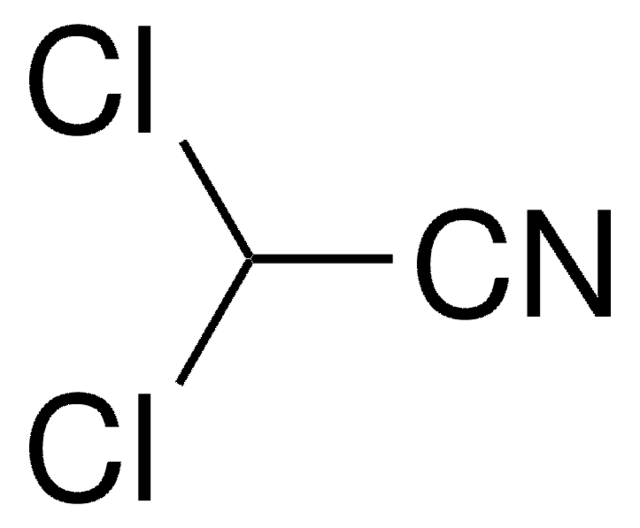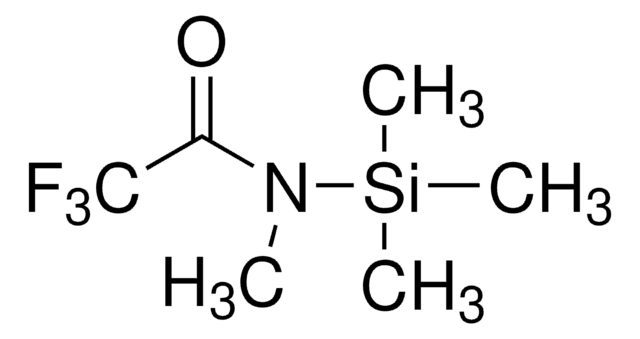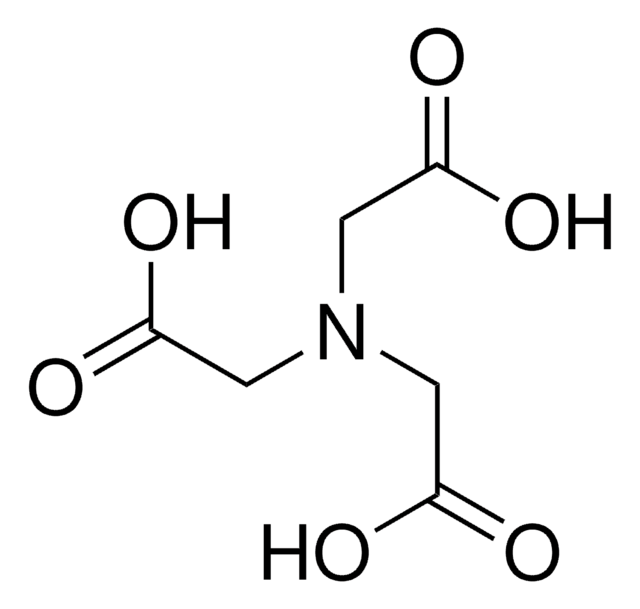442552
Dibromoacetonitrile
analytical standard
About This Item
Produtos recomendados
grau
analytical standard
Ensaio
≥90% (GC)
Certificado de análise (CofA)
current certificate can be downloaded
embalagem
ampule of 1000 mg
técnica(s)
HPLC: suitable
gas chromatography (GC): suitable
índice de refração
n20/D 1.539 (lit.)
pb
67-69 °C/24 mmHg (lit.)
densidade
2.296 g/mL at 25 °C (lit.)
aplicação(ões)
environmental
formato
neat
temperatura de armazenamento
2-30°C
cadeia de caracteres SMILES
BrC(Br)C#N
InChI
1S/C2HBr2N/c3-2(4)1-5/h2H
chave InChI
NDSBDLSWTGLNQA-UHFFFAOYSA-N
Procurando produtos similares? Visita Guia de comparação de produtos
Descrição geral
Aplicação
Palavra indicadora
Danger
Frases de perigo
Declarações de precaução
Classificações de perigo
Acute Tox. 3 Oral - Aquatic Acute 1 - Aquatic Chronic 1 - Carc. 2 - Eye Irrit. 2
Código de classe de armazenamento
6.1C - Combustible acute toxic Cat.3 / toxic compounds or compounds which causing chronic effects
Classe de risco de água (WGK)
WGK 3
Ponto de fulgor (°F)
Not applicable
Ponto de fulgor (°C)
Not applicable
Equipamento de proteção individual
Eyeshields, Faceshields, Gloves, type ABEK (EN14387) respirator filter
Escolha uma das versões mais recentes:
Já possui este produto?
Encontre a documentação dos produtos que você adquiriu recentemente na biblioteca de documentos.
Os clientes também visualizaram
Nossa equipe de cientistas tem experiência em todas as áreas de pesquisa, incluindo Life Sciences, ciência de materiais, síntese química, cromatografia, química analítica e muitas outras.
Entre em contato com a assistência técnica













